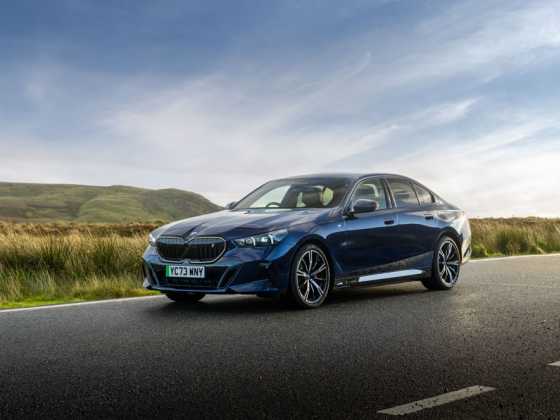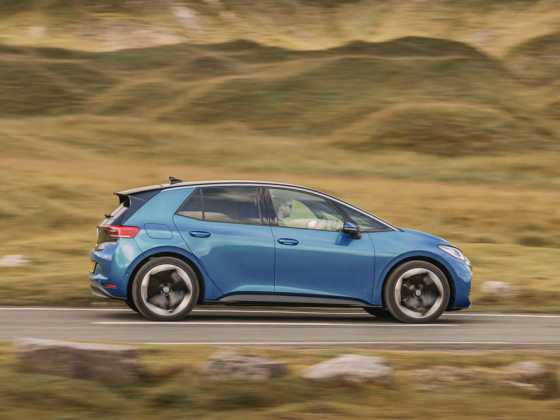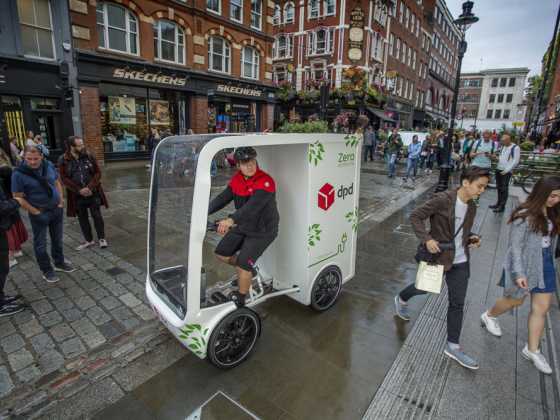The importance of fleet electrification

Fleets are arguably the most important piece of the puzzle when it comes to hitting zero-emission vehicle targets. James Court, chief executive of EVA England, explains why
Fleets are arguably the most important piece of the puzzle when it comes to hitting our 2030/2050 transport targets; not only are they crucial for the demand of new cars, they are also the main source for the second-hand car market.
What may be well known to the readers of GreenFleet often comes as a surprise to others, yet it is always worth reminding policy makers, media and MPs that companies are the main procurers of new vehicles, with businesses and fleets accounting for between 50-60 per cent of all new cars purchased in the UK.
These cars then typically enter the second-hand market after three to five years. For the average driver, their first chance to purchase an EV is most likely going to be in the second-hand market.
We should start to see this happen in the UK this year. Three years ago saw the first significant jump in EV sales, more than doubling from 97,000 in 2019 to over 200,000 in 2020. Then nearly doubles again in 2021 (396,000) with another huge increase in 2022 (663,000).
With these cars coming to the end of their fleet life, this will see EVs go from being the preserve of the company car driver or the reasonably well-off, to being a viable option for the vast majority of people who buy in the used market.
Committing to electric vehicles
Many UK fleets have already committed to electrification that will see over 750,000 vehicles switch to zero emissions by 2030, on top of commitments to company-wide EV charging roll-out for staff and customers that will see chargepoints deployed at over 1,000 company locations.
This trend is likely to accelerate once the government’s announcement on the Zero Emission Vehicle Mandate is confirmed in the coming weeks. This will ban the sale of pure internal combustion engines by 2030 and hybrids by 2035 giving a clear direction for manufacturers, as well as fleets.
This may seem to some as a daunting target, and there is certainly a lot that needs to happen between now and 2030.
We are still talking about a small number of EVs on the road, with under two per cent of all cars in the UK fully electric. Yet as mentioned earlier, EV sales are growing, and were the second most popular ‘fuelled’ car after petrol last year.
Growing vehicle options
Of course, part of the success of EVs has been the rapid extension of options. The original Nissan leaf was a trailblazer, and British built to boot. Yet as with all early innovators, they had obvious limitations. Tesla is widely synonymous with EVs, and while still thought of as ‘out of reach’ for many consumers, the staggering success of the more affordable Model Y has shown the appetite for EVs, and was the second best-selling car in the UK last year.
However, while both the Leaf and Tesla are probably the best known EVs, the real gamechanger has been the seamless integration of BEVs into mainstream marques. Since 2019, we have a seen a steady rise in BEV/PHEV options alongside the traditional diesel and petrol varieties. Virtually all new models now come with this as standard and have helped normalise the optics of EVs we see on the road.
Affordable options such as the Kia e-Niro, MG5 and the latest Nissan Leaf all have very respectable ranges and cost around the £30k mark. These all become much more affordable if offered through a salary sacrifice scheme, saving the driver 20/40/45 per cent depending on their tax rate.
Financial incentives
Another of the draws of EVs is the Benefit-in-Kind rate. This currently stands at two per cent for EVs, which compares very favourably compared to petrol/diesel rates of up to 37 per cent. This rate has been secured until 2025, where it will start to increase by one per cent per year, yet still offers a significant savings compared to ICE vehicles.
Of course, you can have all the financial incentives to switch, but that won’t change consumer behaviour if the cars aren’t fit for purpose. It is now well acknowledged that the cars themselves are good, and the surveys show satisfaction rates of well over 90 per cent, with only a tiny number saying they want to move back to ICE. The drive quality, comfort and reliability are all huge selling points, however, the biggest issue, both perceived and in lived experience, is that of the charging network.
The charging picture
The charging situation in the UK is a mixed picture, and very dependent on where you live and what charging you need. For around the 70 per cent of brits who own a driveway, that vast majority of charging can be done from home. This is obviously the cheapest and most convenient way to charge up, and only requires fast chargers for long journeys or destination charging at the end of the journey.
The UK is reasonably well served on the motorway network for long trips, and as many argue, we have enough chargers, what we don’t have is certainty that the charger is going to be available and working when we get there. This can obviously be a huge issue if you are relying on a charge. Thankfully, there are new government regulations coming that seeks to address this issue.
EVA England were strong proponents of the ’Consumer Experience’ work being led by OZEV and DfT that will introduce 99 per cent reliability targets for Charge Point Operators (CPOs) across their portfolio. It should be noted that nearly all CPOs already achieve reliability of well above 90 per cent, with only a couple of anomalies languishing at 70-80 per cent, yet one bad experience outweighs a hundred good ones, and there should be no excuse for serial offenders.
Another interesting move is the proposed opening up of charger data. This will mean real time information of the state of chargers, and make it much easier to plan your journey. One of the benefits of Tesla’s is the seamless communication between the cars and the charging network. Hopefully, these regulations will soon mean all EV drivers can have confidence that they will be able to charge when they need to.
For others without a driveway, like myself, I need lamppost chargers, or a local hubs/destination chargers. Living in London, I’m well served for this infrastructure, indeed I’m lucky to have five lamppost chargers on my street. But that is not the case everywhere. This too is likely to be much improved in the coming years, with local councils, national government, and indeed private companies investing much more in this area. There are various pots of money available from national government, and a growing knowledge base and willingness at a local level to drive this agenda forward.
When all added together, the UK is one of the leading countries in the world for electric vehicles and the picture is only getting better. This is both welcome, but also much needed as we move from the early adopters towards a more mainstream market.






